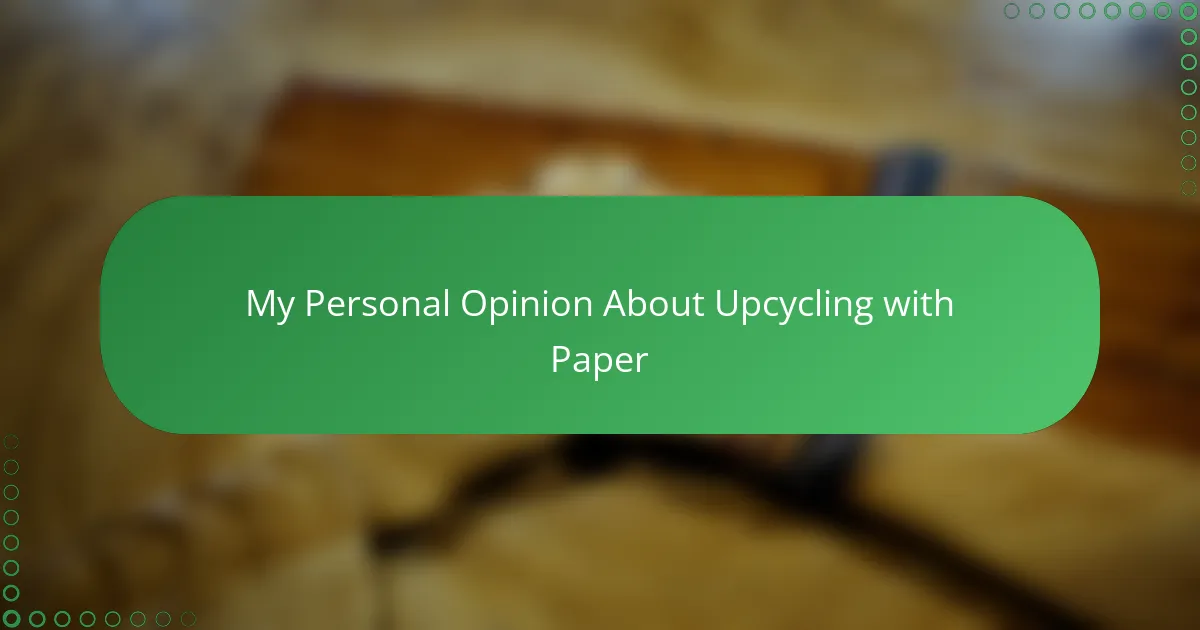Key takeaways
- Upcycling with paper transforms discarded materials into creative projects, reducing waste and promoting sustainability.
- Common materials for paper crafts include scrap papers, magazine pages, and cardstock, each offering unique textures and colors.
- Basic techniques such as tearing, layering, and folding enhance the creative process, adding character and dimension to projects.
- Successful paper crafting benefits from an organized workspace and the use of quality adhesives to maintain the integrity of the final piece.
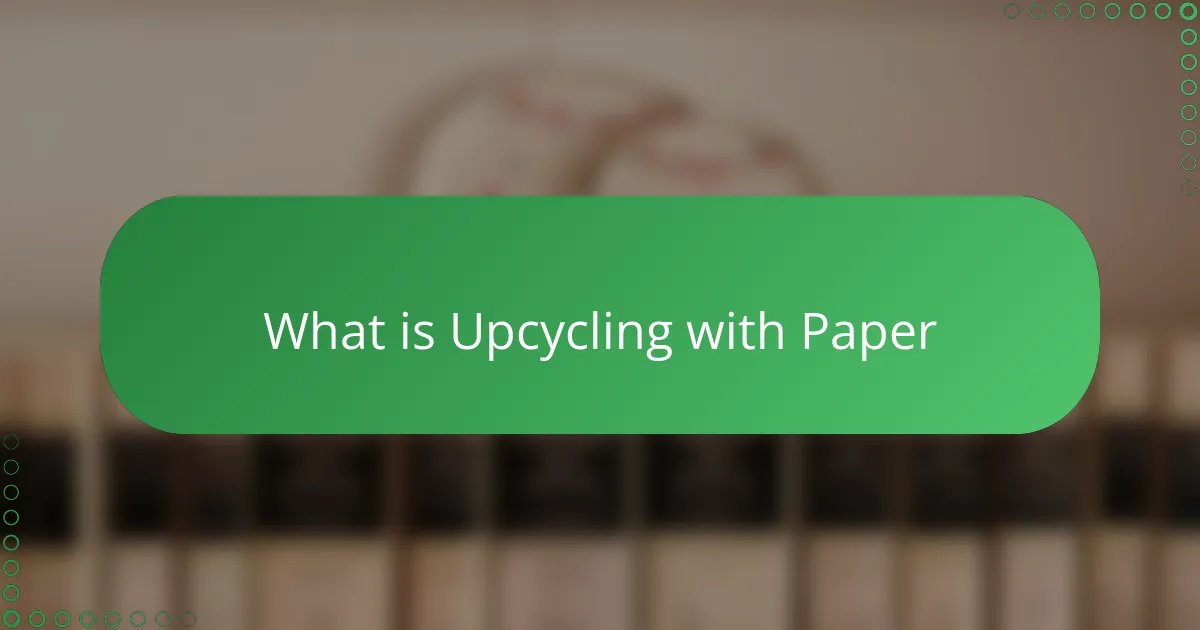
What is Upcycling with Paper
Upcycling with paper is essentially giving new life to old or discarded paper materials rather than tossing them away. It’s like seeing potential where others might only see waste—a bit like finding treasure in what was once forgotten. Have you ever looked at a crumpled receipt or a worn-out book page and wondered how it could shine again in a craft?
From my experience, upcycling paper feels deeply satisfying because it’s not just about reusing; it’s about creativity and respect for resources. When I transform scraps of newspaper or pages from old magazines into something beautiful, I feel connected to a cycle of renewal rather than destruction. It makes me ask, why throw away when we can reinvent?
In practical terms, upcycling paper can mean turning remnants into greeting cards, bookmarks, or even intricate art pieces. Each project is a small celebration of possibility, reminding me that paper’s story doesn’t end at disposal—it’s merely paused, waiting for a fresh start. Doesn’t that idea make the craft feel even more meaningful?
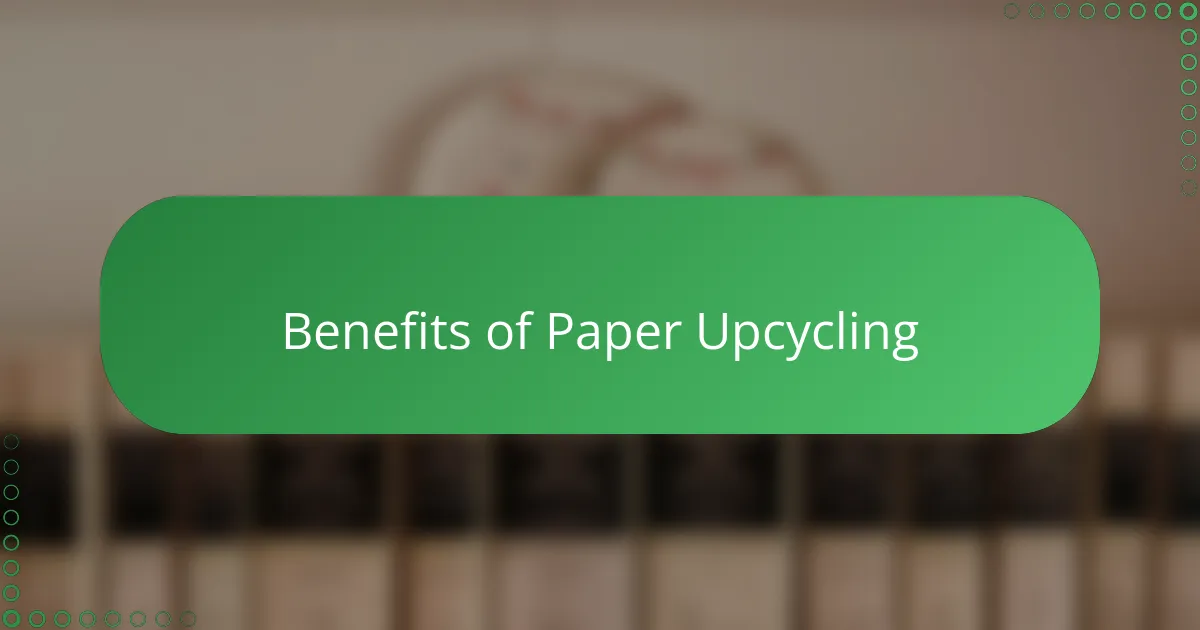
Benefits of Paper Upcycling
One of the biggest benefits I’ve found in upcycling paper is how it reduces waste. Instead of piling up in a landfill, those bits of paper get a second chance. Isn’t it amazing to think that something as simple as a scrap can become a beautiful creation rather than just trash?
Another thing I appreciate is the creative freedom paper upcycling offers. Each piece of reused paper brings its own texture, color, or print into the mix, sparking new ideas I wouldn’t have had otherwise. Have you ever noticed how an unexpected pattern from an old magazine can inspire a whole new design?
Finally, there’s a genuine satisfaction that comes from knowing you’re helping the environment, even in a small way. When I hold a handmade card that started as discarded paper, it feels like I’m part of something bigger—something kind to the planet. That feeling alone makes the extra effort feel worthwhile, don’t you think?
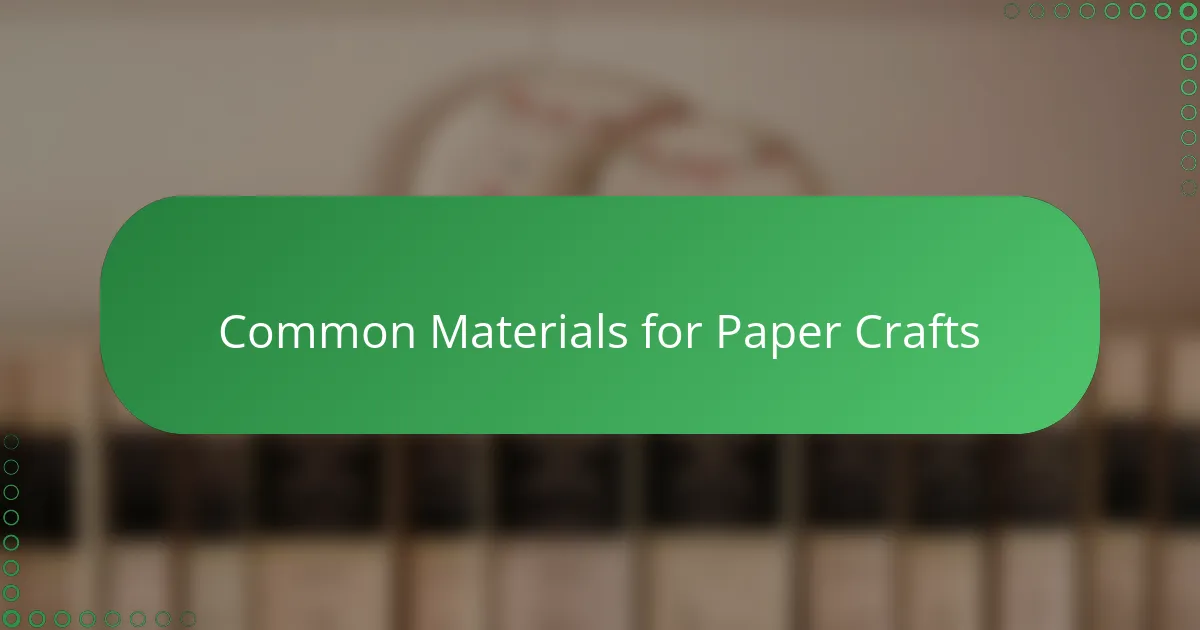
Common Materials for Paper Crafts
When I first started paper crafting, I quickly realized that certain materials keep showing up on my worktable—things like scrap paper from old notebooks, magazine pages, and even junk mail. These common materials are surprisingly versatile, each lending a different texture or color that can completely change a project’s vibe. Have you ever noticed how a glossy magazine page contrasts beautifully against matte recycled paper?
Another favorite material for me is cardstock. Its sturdiness makes it perfect for projects that need a bit more structure, like handmade cards or mini albums. I find that working with a mix of delicate tissue paper and firm cardstock keeps my creations balanced both visually and physically, which is something you don’t always get with just one type of paper.
Sometimes, I experiment with specialty papers like handmade sheets embedded with petals or fibers. These add a unique tactile element that feels almost magical in the finished piece. Do you find yourself drawn to certain papers because of how they feel as much as how they look? For me, that sensory experience is a big part of the craft’s charm.
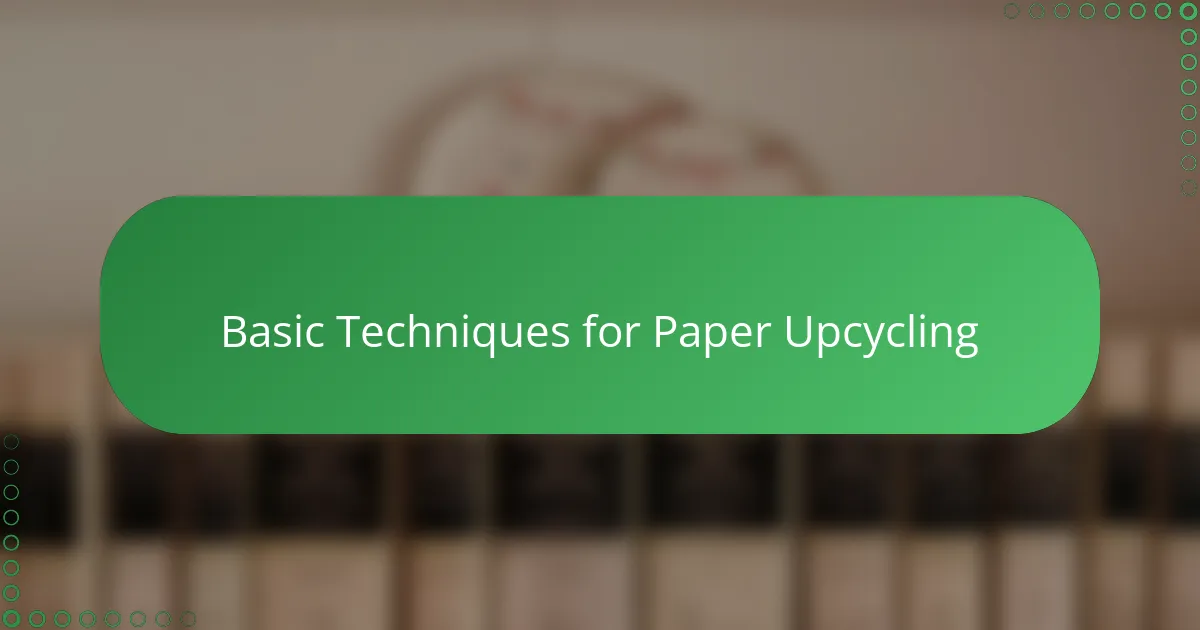
Basic Techniques for Paper Upcycling
One basic technique I always rely on is tearing paper instead of cutting it perfectly with scissors. The rough edges add character and a natural feel to my projects. Have you ever noticed how a jagged edge can make a simple collage come alive with texture and depth?
Another method I enjoy is layering different types of paper to create dimension. For example, placing translucent tissue paper over printed magazine clippings gives a soft, dreamy effect I find quite captivating. It’s like each layer tells its own story while coming together as something new.
Folding and scoring are also essential in my upcycling toolkit. Even a simple fold can transform a flat sheet into an envelope, pocket, or decorative element without needing glue or tape. Have you tried turning scraps into intricate shapes that surprise you with their simplicity and elegance? I find that these small folds bring a playful aspect to the craft that keeps me excited.
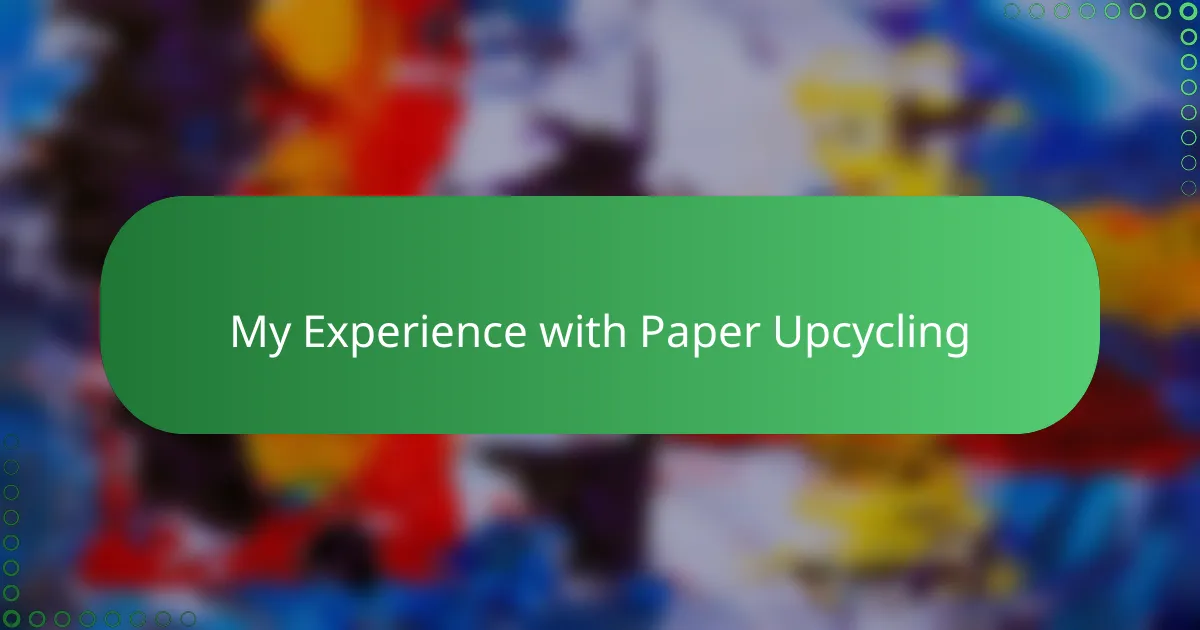
My Experience with Paper Upcycling
When I first tried upcycling paper, I remember feeling a mix of curiosity and hesitation. Would those old receipts and scrap papers hold any artistic value? To my surprise, each little piece seemed to carry its own story, and transforming them gave me a sense of accomplishment I hadn’t expected.
Sometimes, I get lost in the process of selecting which papers to combine. I once made a set of bookmarks from torn pages of a vintage novel and some colorful magazine scraps. The textures and colors unexpectedly complemented each other, and it felt like I was weaving together fragments of different lives into something new.
There have also been moments when upcycling paper turned into a sort of meditation for me. Sitting quietly, folding, layering, and arranging scraps allows my mind to slow down. Have you ever noticed how such a simple act can bring calm and focus? For me, it’s one of the most rewarding parts of this craft.
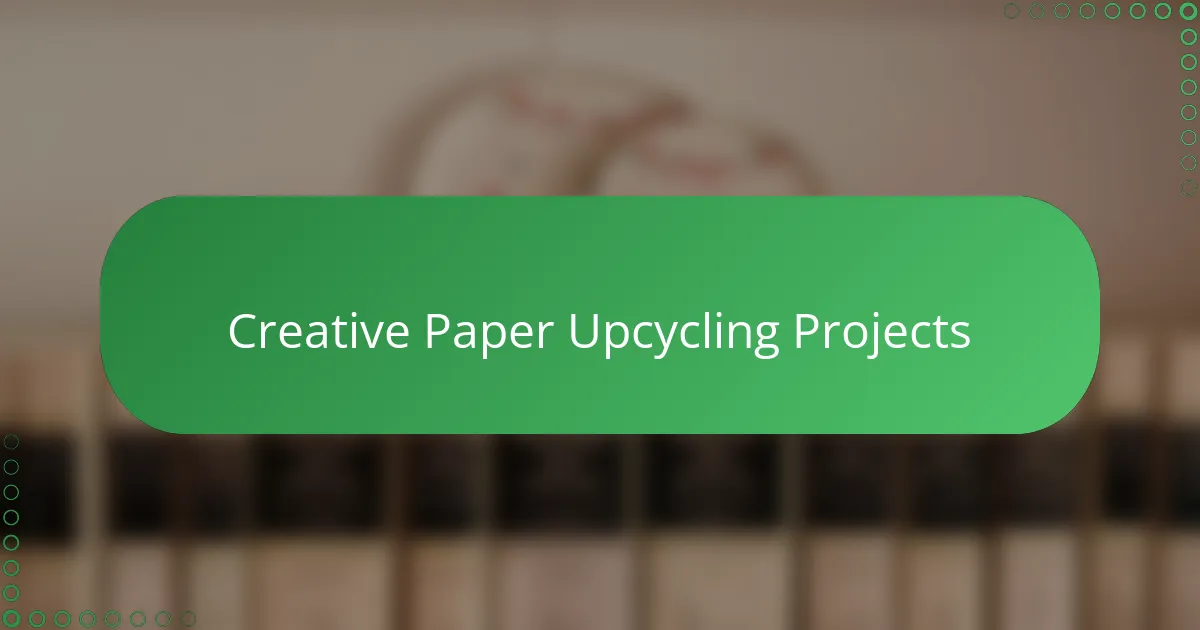
Creative Paper Upcycling Projects
One of my favorite creative paper upcycling projects has been turning old book pages into decorative bowls. I remember carefully layering and shaping those fragile sheets, watching them transform from something forgotten into a functional piece of art. Have you ever tried giving paper that kind of three-dimensional life? It’s surprisingly empowering to see flat pages become something sculptural and useful.
Another project that really sparked joy for me was crafting personalized gift tags from leftover magazine clippings. Mixing bold colors and interesting textures, I could customize each tag to fit the recipient’s personality perfectly. It made me think—why settle for plain tags when you can make something uniquely expressive from scraps?
Sometimes, I dive into making layered collages, combining torn paper, old maps, and printed fragments to tell visual stories. Each piece feels like a chapter, and assembling them is like piecing together a memory or mood. Does the idea of creating a narrative through paper intrigue you? For me, that’s where upcycling becomes a truly creative adventure.
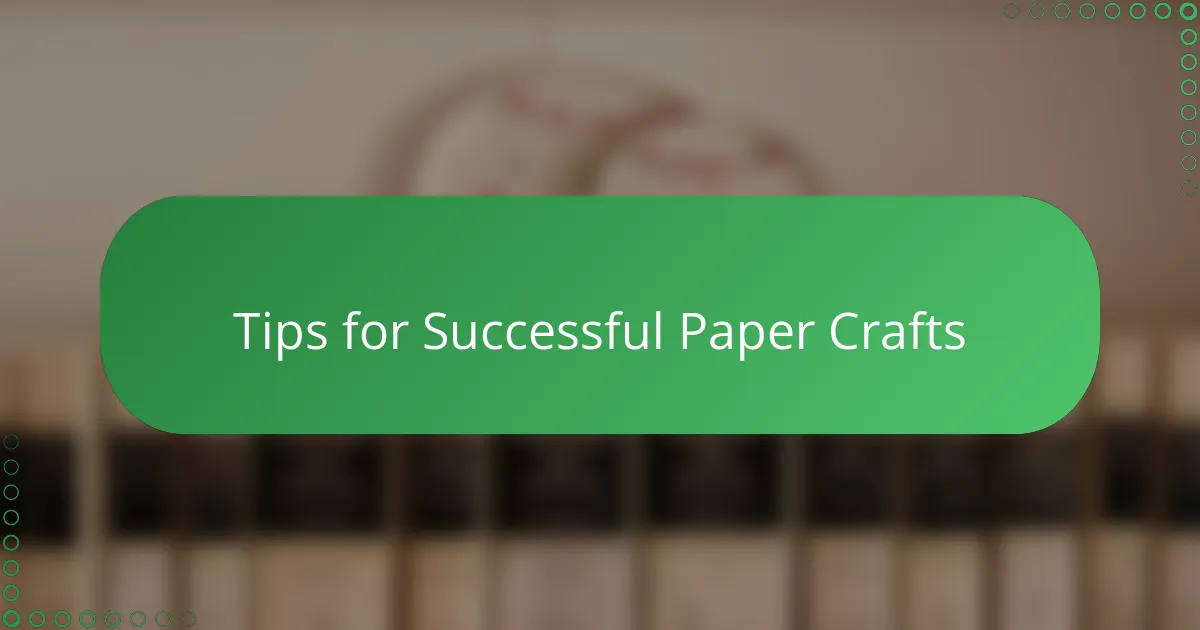
Tips for Successful Paper Crafts
One tip I’ve found invaluable is to keep your workspace tidy but not sterile. I like having all my paper scraps visible and within reach because sometimes inspiration strikes from the smallest, most overlooked bits. Have you ever noticed how a scattered pile of colorful scraps suddenly sparks an idea you wouldn’t have had if everything were neatly stored away?
Paying attention to the quality of your adhesives also makes a huge difference. From my experience, using acid-free glue preserves the paper’s integrity and prevents unwanted yellowing over time. Isn’t it frustrating when your beautiful project starts to look aged prematurely? Choosing the right glue is a small step that keeps your crafts looking fresh and durable.
Finally, don’t shy away from experimenting with textures and layering techniques. I remember once layering translucent tissue paper over printed book pages, and the delicate interplay of light and shadow amazed me. Have you tried layering papers with different weights or finishes? That tactile contrast often brings life and depth to a simple design in ways I hadn’t expected.
